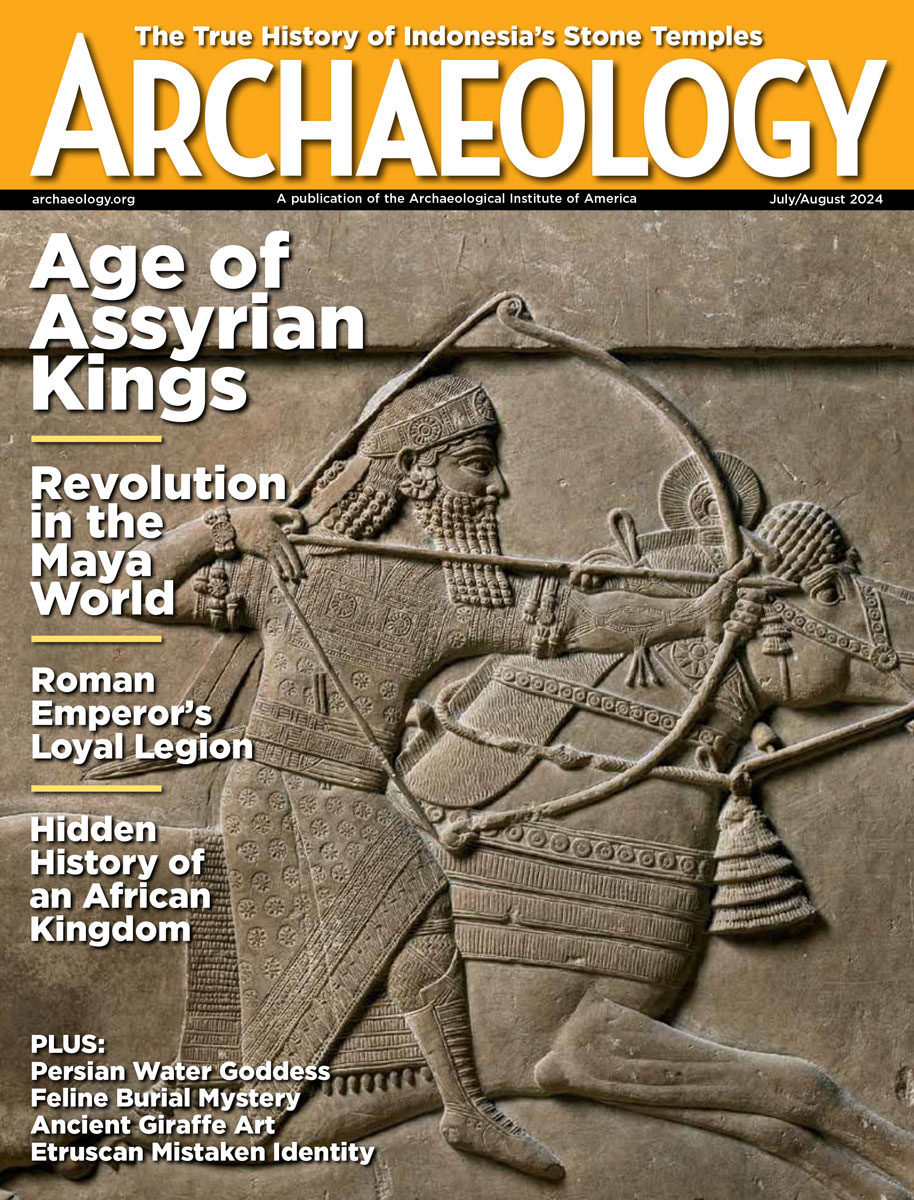Wednesday, September 10
September 10, 2008
An “eye” stolen from a statue of Amenhotep III in 1972 will be returned to Egypt by a Swiss museum. “The thieves sold it to an American antiquities dealer who then auctioned it at Sotheby’s,” explained Egypt’s culture minister, Faruk Hosni.
Archaeologist Denise To and the Joint POW/MIA Accounting Command are looking for the remains of some of the 30,000 American soldiers killed during World War II in western Germany during the Battle of Hürtgen Forest, including a young pilot from Texas whose plane was shot down on November 5, 1944.  Â
The Bill Barrett Corporation is digging natural gas wells in the Nine Mile Canyon area of Utah, and the company’s public relations campaign promises that “There will be no net impacts.” But Steve Bloch, of the Southern Utah Wilderness Alliance, says the company is “greenwashing” the drilling, which he says is having an adverse impact on the region’s rock art. Â
ATVs and dirt bikes are damaging rock art and artifacts in the Nanaimo area of British Columbia, Canada. “It really comes down to the individual, you can educate them as much as you want but it comes down to if they care,” said Julie Cowie, president of the local archaeological society. Â
The Anthropology Museum at Wake Forest University in North Carolina has created an online database of its more than 26,000 artifacts. The database is open to the public. Â
Some of the 4,000-year-old bones of a young person were uncovered in Ireland’s County Clare, in the passageway to the central burial chamber of the stone fort known as Caherconnell Cashel. “The fact that all the bones were not there would suggest that the body was brought from somewhere else and were allowed to decompose before burial,” said archaeologist Graham Hull. Â
UNESCO says that seven World Heritage sites in Great Britain are in danger, including the Tower of London, the old town of Edinburgh, and Stonehenge.  Â
In suburban Chicago, sixth-grade teacher Jennifer Combs had her students excavate an ancient civilization from a tray of brownies. “Once we dig in there, it is destroyed. We can’t go back and recreate what was going on,” she told them.
- Comments Off on Wednesday, September 10
Tuesday, September 9
September 9, 2008
Neanderthal brains developed in a way similar to modern human brains, according to the analysis of the skulls of two Neanderthal toddlers, and an infant Neanderthal skeleton. “In many respects they are much more similar to modern humans than we thought. First it was tools, then eating meat, altruism, all kinds of features that seem to be deeply rooted to evolution,” said Christoph Zollikofer of the University of Zurich.Â
Washington State’s B Reactor, which produced plutonium for the bomb dropped on Nagasaki during World War II, will be preserved as a National Historic Landmark. “This machine changed the world,” explained historian Michele Gerber. Demolition of the reactor had been considered. Â
Retired linguistics professor Ekkehart Malotki uses his knowledge of Hopi language to study rock art in Arizona. His efforts to record and protect rock art are chronicled in The New York Times. Â
Underwater archaeologists will share Venus (Virtual Exploration of Underwater Sites) with the public, allowing amateurs to operate their own virtual submersibles to explore European shipwrecks. A simulator will go on display at the Deep Aquarium in Hull, England, and will also be available online. Â
An archaeologist will assist Saskatoon’s fire department water rescue team recover artifacts from the S.S. City of Medicine Hat, a luxury ship that sank after it crashed into a bridge in 1908. “This is an archaeological reconnaissance, not an excavation,” said archaeologist Butch Amundson. Â
Narrabeen Man, whose bones were discovered beneath a bus stop in Australia three years ago, has been dated to 4,000 years old. Researchers say wounds to the bones show that Narrabeen Man had been executed. “Aboriginal society was very careful about the way they carried out punishment of crimes. It was violent, but socially prescribed, because this person had obviously done something wrong,” archaeologist Jo McDonald told the press. Â
Here’s how things stand thus far in the case in Kauai where 30 sets of ancient human remains were discovered on a beachfront construction site. Judge Kathleen Watanabe’s decision on the case is expected by September 16.
- Comments Off on Tuesday, September 9









